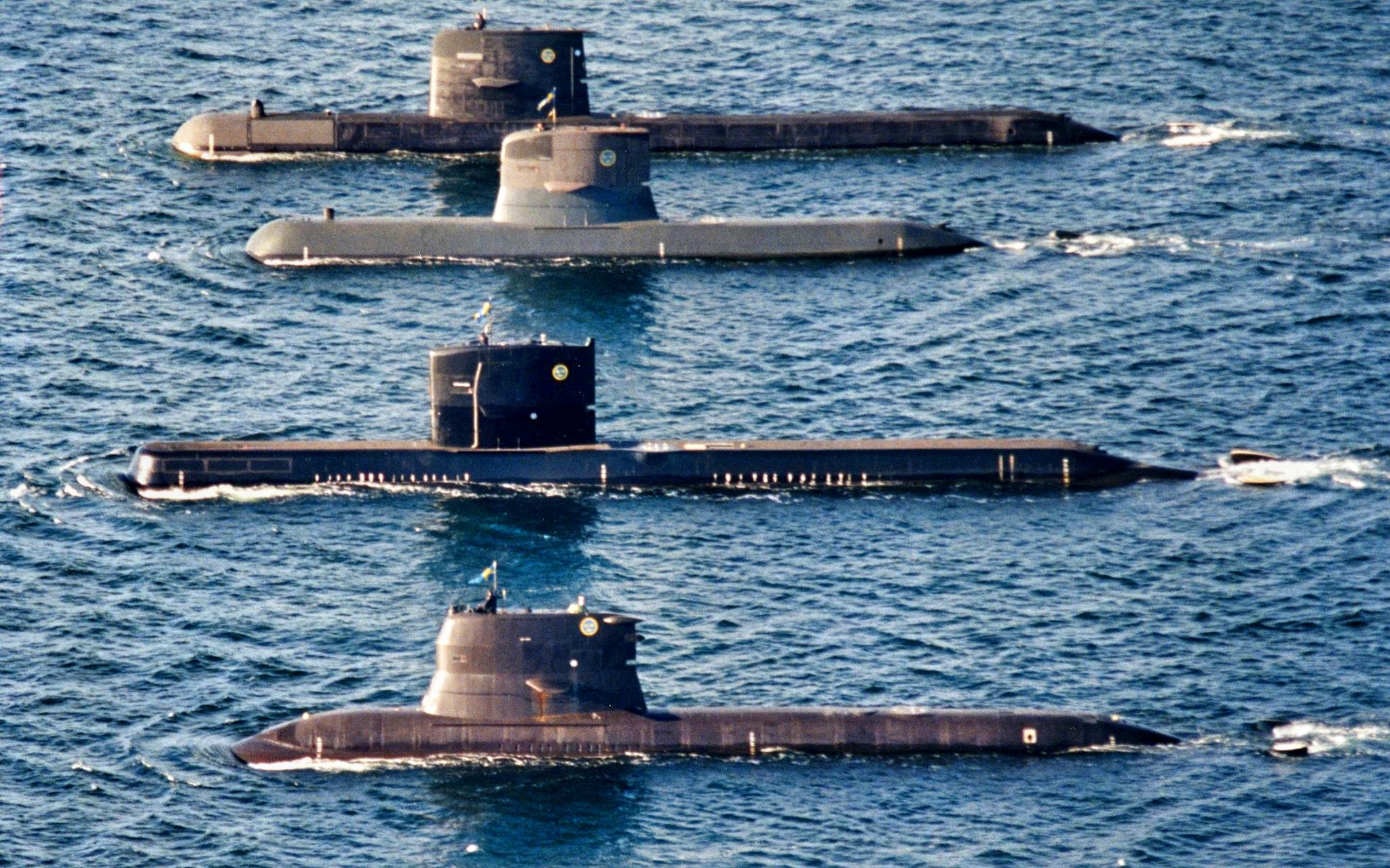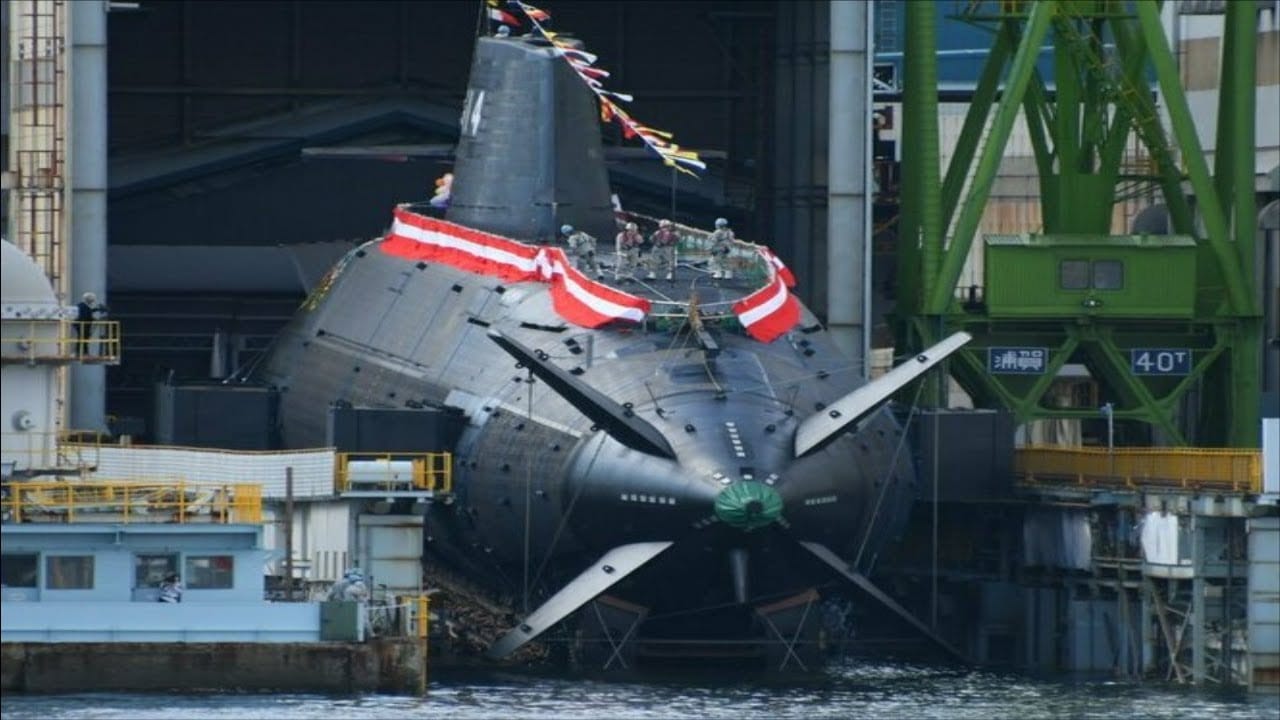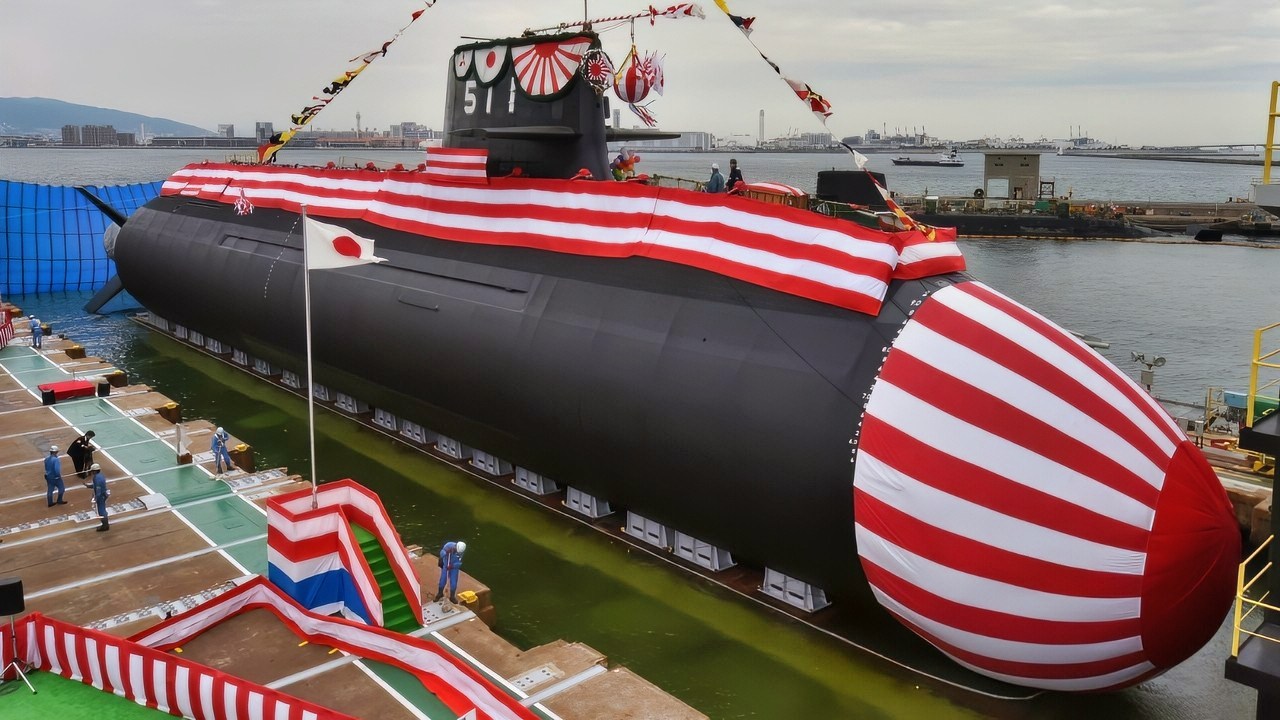Key Points and Summary – Ever since the end of the Second World War, Japan has been required to maintain a smaller navy, strictly for self-defense purposes, and has relied on the United States for most of its protection.
-However, the Japan Maritime Self-Defense Force (JMSDF) still maintains a modest fleet of attack submarines.
-The Sōryū-class currently makes up the backbone of Japan’s submarine fleet.
-First introduced in 2009, these submarines were the first in the JMSDF to feature advanced technologies, including Air Independent Propulsion (AIP), state-of-the-art sensors, and other advanced capabilities.
Design of the Sōryū-class
The Sōryū-class is larger than its predecessor, the Oyashio-class, making it the largest Japanese submarine until the introduction of the Taigei-class.
It measures approximately 84 meters in length, with a beam of 9.1 meters and a draft of 8.5 meters. Its displacement is about 2,900 tons when surfaced and roughly 4,200 tons submerged.
The hull is constructed from high-tensile steel and coated with anechoic tiles to reduce sonar detection. Machinery is acoustically isolated to minimize noise, and the stern features an X-shaped rudder configuration rather than the traditional cruciform design. This X-rudder arrangement significantly improves maneuverability, especially in shallow coastal waters, and is one of the most distinctive visual and functional features of the class.
The Sōryū-class employs an entirely new hybrid system consisting of two Kawasaki diesel engines and electric motors, delivering approximately 3,900 horsepower on the surface and 8,000 horsepower submerged.
Early boats in the class incorporated four Stirling engines for air-independent propulsion (AIP), a technology that allows the submarine to remain submerged for extended periods without snorkeling.

Gotland-Class Submarines. Image Credit: Creative Commons.
This capability was a game-changer for Japan, enabling it to maintain weeks of underwater endurance and dramatically improve its stealth. Later units, starting with Ōryū (SS-511), launched in 2018, introduced lithium-ion batteries in place of Stirling AIP.
This innovation made Ōryū the world’s first operational submarine equipped with lithium-ion batteries. These batteries offer superior energy density, faster recharge cycles, and quieter operation compared to traditional lead-acid batteries, giving the Sōryū-class unmatched underwater endurance among conventional submarines.
Specs and Capabilities
Stealth is a defining characteristic of the Sōryū-class. The combination of anechoic coatings, acoustic isolation, and ultra-quiet Stirling engines, or later lithium-ion systems, makes these submarines extremely difficult to detect.
The sonar suite includes a ZQQ-7 bow array, four flank arrays, and a towed array, providing comprehensive detection capabilities.
Additional systems include the ZPS-6F surface search radar, ZLR-3-6 electronic support measures, and acoustic decoys for defense.
These features enable the Sōryū-class to operate at depths approaching 500 meters and conduct covert missions for extended durations.
The submarine can reach speeds of about 13 knots on the surface and up to 20 knots submerged. Its range is approximately 6,100 nautical miles at 6.5 knots, and with AIP or lithium-ion batteries, it can remain submerged for up to two weeks without surfacing.
The crew complement is typically 65 personnel, including nine officers and 56 enlisted sailors. Armament consists of six 533 mm torpedo tubes capable of deploying Type 89 torpedoes, UGM-84 Harpoon anti-ship missiles, and naval mines. These weapons enable the Sōryū-class to undertake a range of missions, including anti-submarine warfare, anti-surface warfare, mine laying, and intelligence gathering.
What Separates the Sōryū-class From Japan’s Other Submarines?
What truly separates the Sōryū-class from previous Japanese submarines, such as the Oyashio-class, is its technological sophistication and operational flexibility.
The Oyashio-class relied on traditional diesel-electric propulsion and lead-acid batteries, which limited its submerged endurance and required frequent snorkeling.
In contrast, the Sōryū-class introduced AIP technology and later lithium-ion batteries, enabling far longer underwater operations and reducing acoustic signatures. The X-rudder design also provides superior handling compared to the cruciform stern of the Oyashio-class.
While both classes share similar sonar configurations, the Sōryū-class integrates more advanced electronics and noise-reduction measures, making it significantly stealthier.
The Sōryū-class was developed to fit Japan’s specific strategic needs.
Its development was driven by the need to counter the growing naval capabilities in the region, particularly those of China and North Korea.
The ability to remain submerged for extended periods and operate quietly in contested waters gives Japan a critical advantage in surveillance and deterrence.
The class even attracted international attention; Australia evaluated the Sōryū-class as a candidate for its Collins-class replacement program, underscoring its reputation as one of the most capable non-nuclear submarines in the world.
Japan’s Most Important Submarines
The Sōryū-class is slated to be replaced by the Taigei-class submarines, which build upon the technologies and the legacy set by the Sōryū-class.
The Taigei-class retains the AIP systems and the lithium-ion battery-powered plant. They are 100 tons heavier than the previous class and feature more advanced sonar systems, more efficient generators, and use the most modern torpedoes produced by Japan.
While the Taigei-class is the most advanced submarine in the JMSDF, it is the Sōryū-class that pioneered many of these technologies, allowing Japan to hone its technical prowess.

New Taigei-Class Submarine From Japan. Image Credit: Creative Commons.

Taigei-Class Submarine from Japan. Image Credit: Creative Commons.
It was the first Japanese submarine to employ air-independent propulsion, the first in the world to operationalize lithium-ion batteries, and the first to adopt an X-rudder configuration for enhanced maneuverability.
These innovations, coupled with its quiet design and advanced sonar systems, make it one of the most formidable conventional submarines globally. Compared to earlier classes, it offers superior endurance, deeper stealth, and greater operational flexibility, ensuring Japan maintains a credible and modern undersea deterrent in an era of evolving maritime challenges.
About the Author: Isaac Seitz
Isaac Seitz, a Defense Columnist, graduated from Patrick Henry College’s Strategic Intelligence and National Security program. He has also studied Russian at Middlebury Language Schools and has worked as an intelligence Analyst in the private sector.
More Military
Europe’s New 6th Generation GCAP Stealth Fighter Looks Unaffordable
49 ‘New’ M1A1 Abrams Tanks Were Sent to Ukraine by Australia and America Doesn’t Approve
The U.S. Marine Corps Is Facing a Tough Drone Reality
‘300 Percent More Lethal’: The U.S. Army Is Putting China and Russia on Notice










